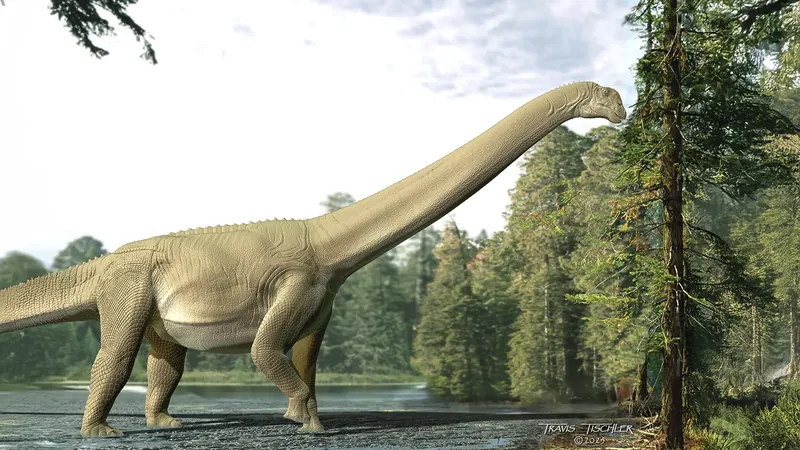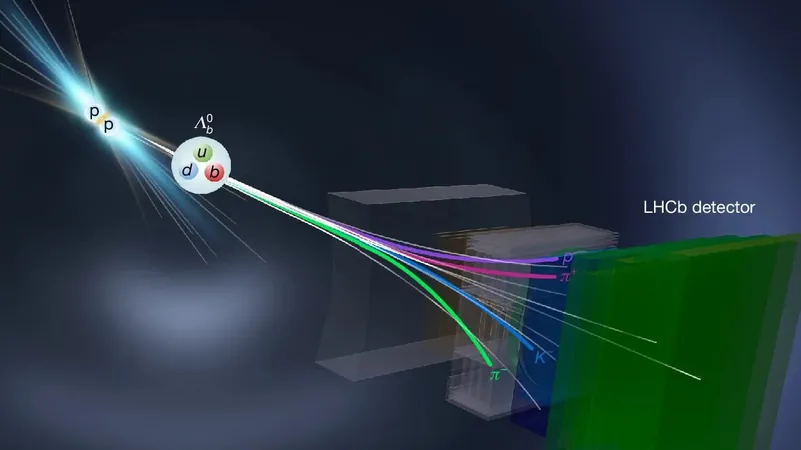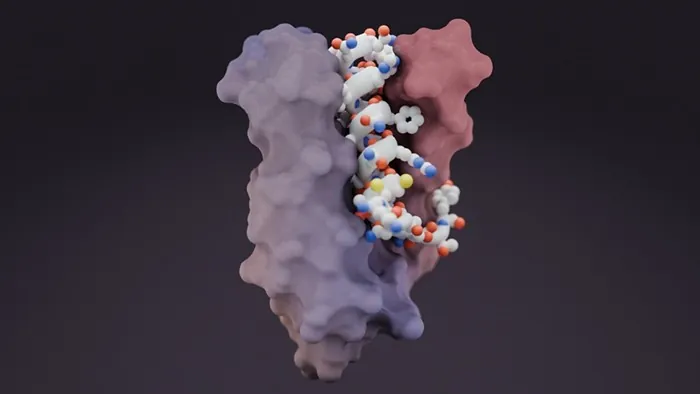
Unlocking the Ancient Secrets of Dinosaur Diets: What One Sauropod Ate 100 Million Years Ago
2025-06-10
Author: Yu
A Groundbreaking Discovery in Dinosaur Diets
In an astonishing revelation, researchers led by Stephen Poropat from Curtin University have found the first confirmed gut contents of a sauropod dinosaur, shedding light on these colossal creatures that roamed the Earth over 100 million years ago. Despite their vast presence across the globe and through geological time, no sauropod had ever been found with preserved gut matter—until now!
What We Learned From a Fossilized Time Capsule
The breakthrough came during an excavation at the Australian Age of Dinosaurs Museum, where a subadult skeleton of the sauropod known as Diamantinasaurus matildae was uncovered in Queensland's Winton Formation. Researchers discovered a unique fractured rock that turned out to be a cololite, an ancient digestive artifact rich in well-preserved plant fossils.
A Feast of Flora: What Sauropods Consumed
Analysis of the cololite revealed that this giant herbivore relied heavily on fermentation and gut microorganisms rather than tedious chewing. The plant remains included conifer foliage, seed-fern fruits, and leaves from flowering plants, proving Diamantinasaurus was a bulk feeder, sampling a variety of vegetation without much selectivity.
Indiscriminate Eating Habits: The Evidence
The well-preserved plants were found to show signs of being severed but not chewed, supporting the bulk feeding hypothesis. The presence of chemical markers indicated that these dinosaurs were opportunistic eaters, consuming whatever greenery was within their reach.
Surprising Adaptations: Eating Flowering Plants
One unexpected finding was the presence of angiosperms or flowering plants in the gut contents, which had only started to flourish in Australia around 100 to 95 million years ago—just when this sauropod lived. This suggests that sauropods swiftly adapted to new food sources, illustrating their flexibility and ecological success.
Growth and Diet: A Changing Menu
The research suggests that as young sauropods grew, their diets expanded to include more high-reaching plants. The cololite analysis indicated a preference for tender shoots and less fibrous new growth, ideal for their developing digestive systems.
Caveats and Considerations of the Findings
Though this groundbreaking study enriches our understanding of sauropod herbivory, Poropat emphasizes that the findings are based on just one individual. Therefore, they may not fully reflect the typical diet of sauropods or changes across seasons. Despite these limitations, the discovery vividly illustrates the colossal ecological role these giants played.
In Conclusion: The Legacy of Bulk Feeding
The strategy of indiscriminate bulk feeding appears to have contributed to the success of sauropods for an astounding 130 million years. Thanks to this monumental finding, we gain a clearer picture of how these ancient giants interacted with their environment, providing valuable insights into the past.




 Brasil (PT)
Brasil (PT)
 Canada (EN)
Canada (EN)
 Chile (ES)
Chile (ES)
 Česko (CS)
Česko (CS)
 대한민국 (KO)
대한민국 (KO)
 España (ES)
España (ES)
 France (FR)
France (FR)
 Hong Kong (EN)
Hong Kong (EN)
 Italia (IT)
Italia (IT)
 日本 (JA)
日本 (JA)
 Magyarország (HU)
Magyarország (HU)
 Norge (NO)
Norge (NO)
 Polska (PL)
Polska (PL)
 Schweiz (DE)
Schweiz (DE)
 Singapore (EN)
Singapore (EN)
 Sverige (SV)
Sverige (SV)
 Suomi (FI)
Suomi (FI)
 Türkiye (TR)
Türkiye (TR)
 الإمارات العربية المتحدة (AR)
الإمارات العربية المتحدة (AR)